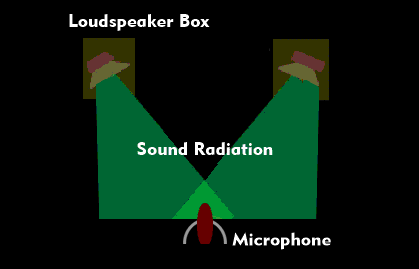acoustic feedback
Acoustic feedback is an unwanted, disruptive feedback in an acoustic system where the loudspeakers and microphone are located in a sound reinforcement room. In acoustic feedback, the sound radiated from the loudspeakers hits the microphone and is in turn amplified via the microphone preamplifier and audio amplifier and radiated as amplified sound from the loudspeakers, which then hits the microphone again, and so on and so forth. The Larsen effect, named after its discoverer, occurs when a radiated audio frequency is identical to the input frequency, which is the case with a normal microphone-speaker system.
In acoustic feedback, a portion of the acoustic power radiated as sound is radiated into the acoustic system via the microphone. The acoustic energy is fed back via air and the sound chamber or via structure-borne sound. Since the absorption and reflection of the sound is frequency-dependent, the feedback cannot be controlled and not only occurs as an extremely annoying whistling or howling noise when sound is radiated from the loudspeaker, but can already be generated by the amplifier noise.
Acoustic feedback is unstable and can be bypassed by the direction of the microphone, its directivity, the dispersion direction of the loudspeakers, their positions or by lowering the volume. In addition to changes in the sound reinforcement room, there are also electronic means of influencing the avoidance of acoustic feedback. For example, the offset of the audio frequency by a few hertz or a time difference between the two quantities, which is equivalent to a phase shift. As a result, the frequencies radiated by the loudspeaker deviate from those reaching the microphone.

